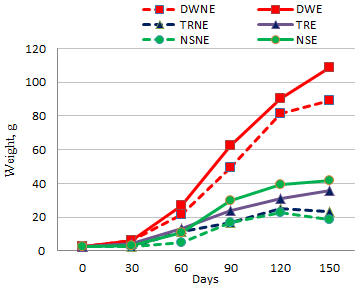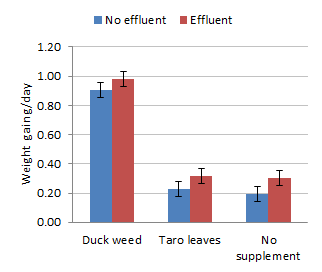 |
 |
| Figure 1. Growth curves of Tilapia raised in open ponds fertilized with biodigester effluent (E) or no fertilizer (NE), and supplemented with duckweed (DW), Taro leaves (TR) or not supplemented (NS) | Figure 2. Mean values for weight gain of Tilapia in open ponds fertilized with biodigester effluent or no fertilizer, and supplemented with duckweed, Taro leaves or not supplemented |